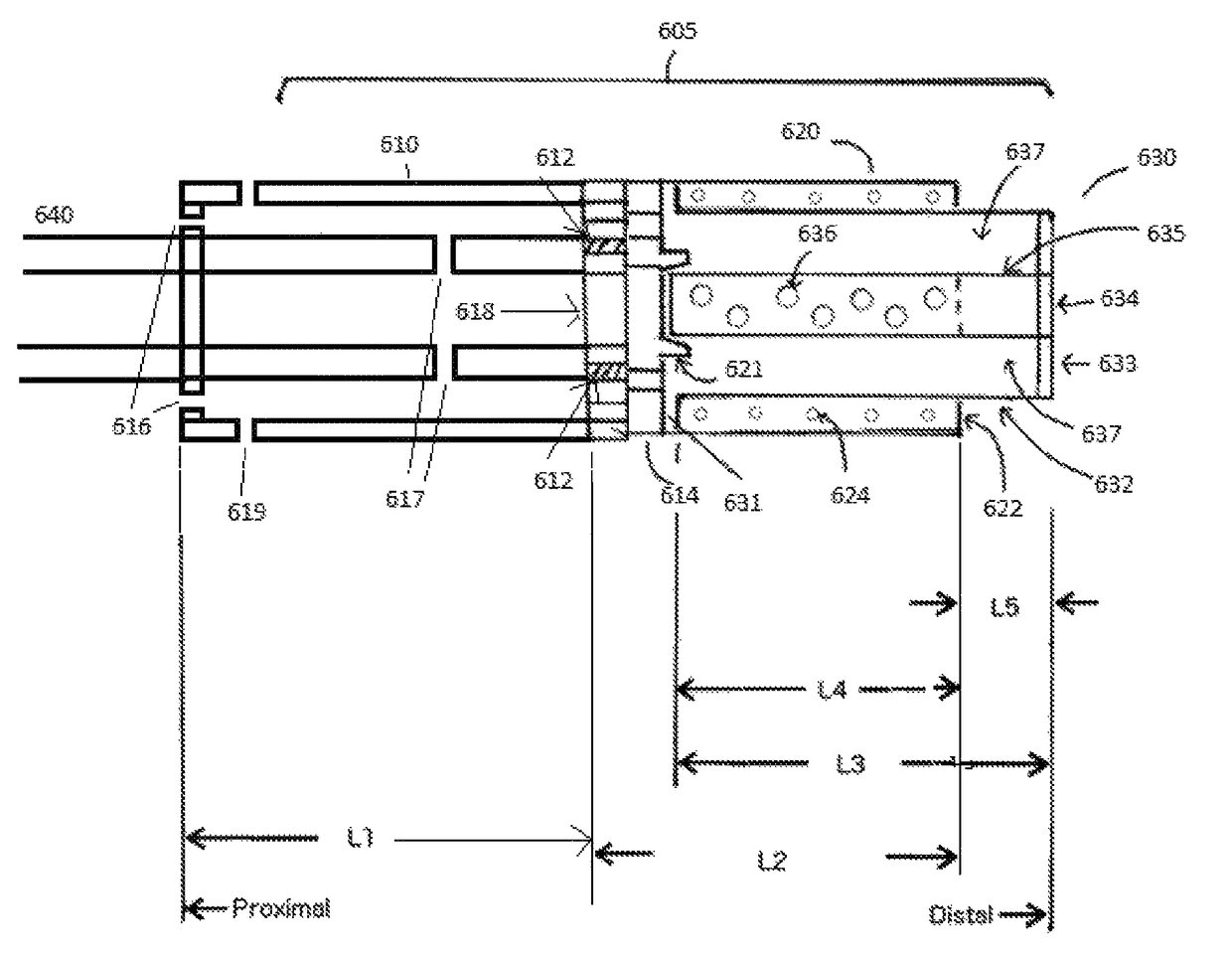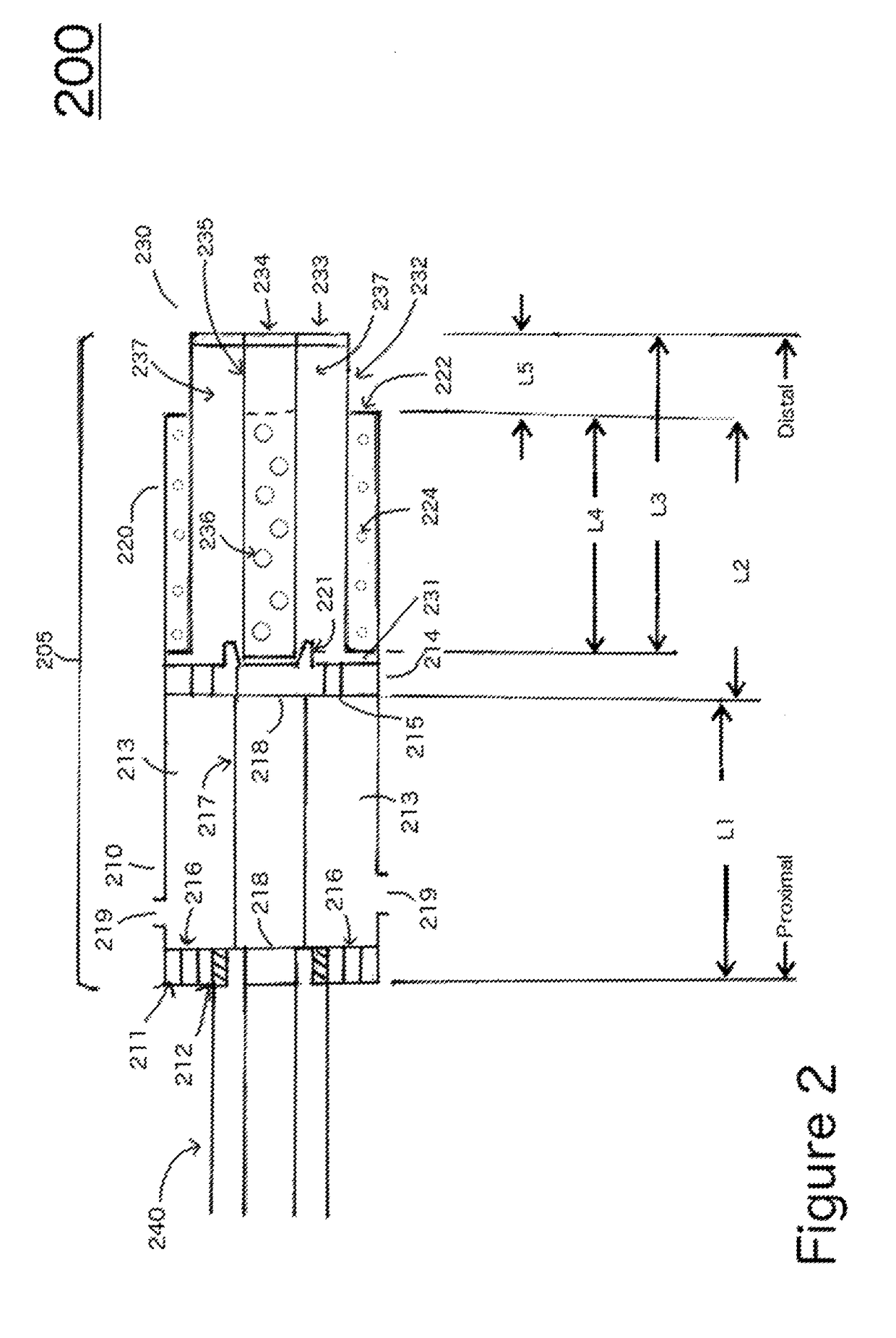Compact space-saving gun silencer
a space-saving, compact technology, applied in the direction of weapons, weapon components, etc., can solve the problems of increased excessive volume of the silencer (suppressor), cumbersome cylinders or tubes, etc., to reduce the sound and flash signature of the host firearm, compact and compact form factor (or length), and the effect of reducing the sound and flash signatur
- Summary
- Abstract
- Description
- Claims
- Application Information
AI Technical Summary
Benefits of technology
Problems solved by technology
Method used
Image
Examples
first embodiment
[0033]More specifically, FIG. 2 is a sectional view of the gun silencer (205) in a retracted state. The silencer (suppressor) is made of at least three chambers including a first chamber (210), a second chamber (220), and a third chamber (230) partially retracted into the second chamber (220).
[0034]In one embodiment, the cylindrical shaped first chamber (210) includes a threaded end cap (211) configured to be secured to threads (212) on a barrel of a firearm (240). The threaded end cap (211) is one embodiment that may be employed for the securement of silencer apparatus to the barrel of the firearm, other methods may include quick disconnect methods such as a three lug mount or any other known method that would maintain the alignment and bore of the firearm to the silencer and maintain a straight through hole path for the projectile. As shown, the threaded end cap (211) has an annular aperture (218) that allows a projectile to freely pass through the first chamber. The first end cap...
fifth embodiment
[0055]Regarding FIG. 5, in a fifth embodiment, the silencer (505) in the extended position has a first chamber (510) that is fitted over the barrel like a sleeve. The first chamber (510) extends proximally and radially over the gun barrel (540). The first chamber can be of cylindrical, oval, or square shape and hollow or filled with sound absorbent material such as a mesh of heat resistant material. The barrel (540) can be solid or ported with vent holes (517). The first chamber (510) can be solid or also contains vent holes (516 and 519) to channel the gasses from the barrel vent holes to the external environment. The first chamber (510) also has openings (515) allowing gasses to flow into the second chamber (520). The end cap opening (518), the alignment guide ring (521), the third chamber inner tube (535), and the hole (534) can have a diameter slightly wider than the inner diameter of the barrel (540) such that the projectile can pass freely through without touching the sides of...
sixth embodiment
[0059]Regarding FIG. 5, in a sixth embodiment, the silencer (505) in the extended position has a first chamber (510) that is fitted over the barrel like a sleeve. The end cap opening (518), the alignment guide ring (521), the third chamber inner tube (535), and the hole (534) can have substantially the same diameter as the inner diameter of the barrel (540).
[0060]This would allow an uninterrupted path of uniform diameter for the shotgun shell with the wad, cup, and shot configuration to pass through the barrel of the gun (640) and the silencer (605) freely. The uninterrupted and uniform diameter of the barrel with the silencer allows the shotgun shell to maintain its flight [and pellet] configuration until it exits the silencer (605). This alignment guide ring (621) can have a beveled or angled inner surface such that the inner tube (635) can be self-centered in the retracted position.
[0061]In order to address various issues and advance the art, the entirety of this application for ...
PUM
 Login to View More
Login to View More Abstract
Description
Claims
Application Information
 Login to View More
Login to View More - R&D
- Intellectual Property
- Life Sciences
- Materials
- Tech Scout
- Unparalleled Data Quality
- Higher Quality Content
- 60% Fewer Hallucinations
Browse by: Latest US Patents, China's latest patents, Technical Efficacy Thesaurus, Application Domain, Technology Topic, Popular Technical Reports.
© 2025 PatSnap. All rights reserved.Legal|Privacy policy|Modern Slavery Act Transparency Statement|Sitemap|About US| Contact US: help@patsnap.com



